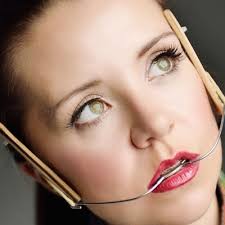When starting orthodontic treatment, many patients ask: what are the risks or side effects of dental headgear? While Dental Headgear in Dubai is an effective tool for correcting bite problems, guiding jaw growth, and aligning teeth, like any orthodontic appliance, it comes with potential drawbacks. Being informed about these concerns helps patients use their headgear correctly while minimizing discomfort and avoiding complications.
What is treatment and how it works?
Dental headgear is an external orthodontic appliance designed to apply steady, gentle pressure to the teeth and jaw. It connects to braces or orthodontic bands inside the mouth and is secured with straps, pads, or headpieces around the head, neck, or chin.
The process works by:
- Adjusting jaw growth direction
- Shifting teeth into proper alignment
- Reducing crowding or spacing issues
- Correcting overbites, underbites, and crossbites
Because this appliance works gradually over time, consistent wear is critical. Interruptions, incorrect use, or accidental damage can reduce effectiveness and potentially create other dental issues.
Importance of treatment:
For certain orthodontic cases, dental headgear is essential because it can correct jaw and bite problems that braces alone cannot handle. This is particularly important for young patients whose jawbones are still developing. Without timely intervention, these bite issues could lead to:
- Difficulty chewing or speaking
- Increased risk of tooth wear
- Jaw joint discomfort or strain
- Aesthetic concerns from misaligned teeth
However, with benefits come possible side effects—some temporary, others preventable through proper use and care. Awareness is the first step in minimizing these risks.
Types of treatment and their side effects:
Different types of dental headgear may present slightly different side effects:
- Cervical Pull Headgear – Worn around the neck; may cause mild neck strain in the beginning.
- High-Pull Headgear – Straps around the back or top of the head; may cause slight pressure headaches early in treatment.
- Combination Pull Headgear – Applies force in multiple directions; can increase the adjustment period discomfort.
- Reverse-Pull Facemask – Covers the chin and forehead; may cause temporary skin irritation where pads make contact.
- J-Hook Headgear – Attaches directly to braces; higher risk of soft tissue irritation if detached suddenly.
Most side effects are mild and temporary, often improving as the patient gets used to the appliance.
Preparation and aftercare to reduce risks:
Preparation before starting:
- Learn how to properly attach and remove dental headgear
- Understand recommended wear time and schedule
- Keep all components clean to prevent irritation or infection
Aftercare once in use:
- Clean straps, pads, and metal parts daily
- Check for signs of wear or loose attachments
- Avoid physical activities that could cause impact injuries while wearing the appliance
- Use orthodontic wax to cover areas causing friction
- Resume wear promptly after removal for meals or sports to maintain progress
With consistent cleaning, proper fitting, and timely adjustments, most patients experience minimal side effects.
Ideal candidate, risks, and benefits:
Ideal candidates for Dental Headgear are:
- Patients with significant overbite or underbite issues
- Individuals whose jaw growth can still be guided
- Those committed to following wear time instructions
Risks or side effects may include:
- Temporary soreness of teeth or jaw
- Mild headaches during adjustment period
- Skin irritation from straps or pads
- Risk of injury if appliance is pulled or detached suddenly
- Slight speech difficulty until adaptation occurs
Benefits outweigh risks for most patients, including:
- Effective correction of jaw and bite issues
- Shorter overall orthodontic treatment time when used consistently
- Avoidance of more invasive procedures in certain cases
Managing potential side effects with good care habits ensures the appliance remains both safe and effective.
FAQs and conclusion:
Does dental headgear hurt?
Mild soreness is common in the first days but usually subsides as you adapt.
Can dental headgear cause permanent damage?
When worn correctly, permanent damage is rare. Most issues result from misuse or neglect.
What should I do if my skin becomes irritated?
Clean the straps, apply padding, and ask your orthodontic provider for comfort tips.
Is it safe to sleep with dental headgear?
Yes—most designs are intended for overnight wear, which is crucial for treatment success.
Can headgear change my face shape?
It can influence jaw growth in younger patients, but these changes are intended for functional and aesthetic improvement.
In conclusion, what are the risks or side effects of dental headgear? Most are minor, temporary, and preventable with proper care, consistent cleaning, and correct usage. By understanding the potential drawbacks—such as mild soreness, skin irritation, or speech adjustment—patients can take proactive steps to reduce discomfort while enjoying the long-term benefits of dental headgear in achieving a healthy, well-aligned smile.

